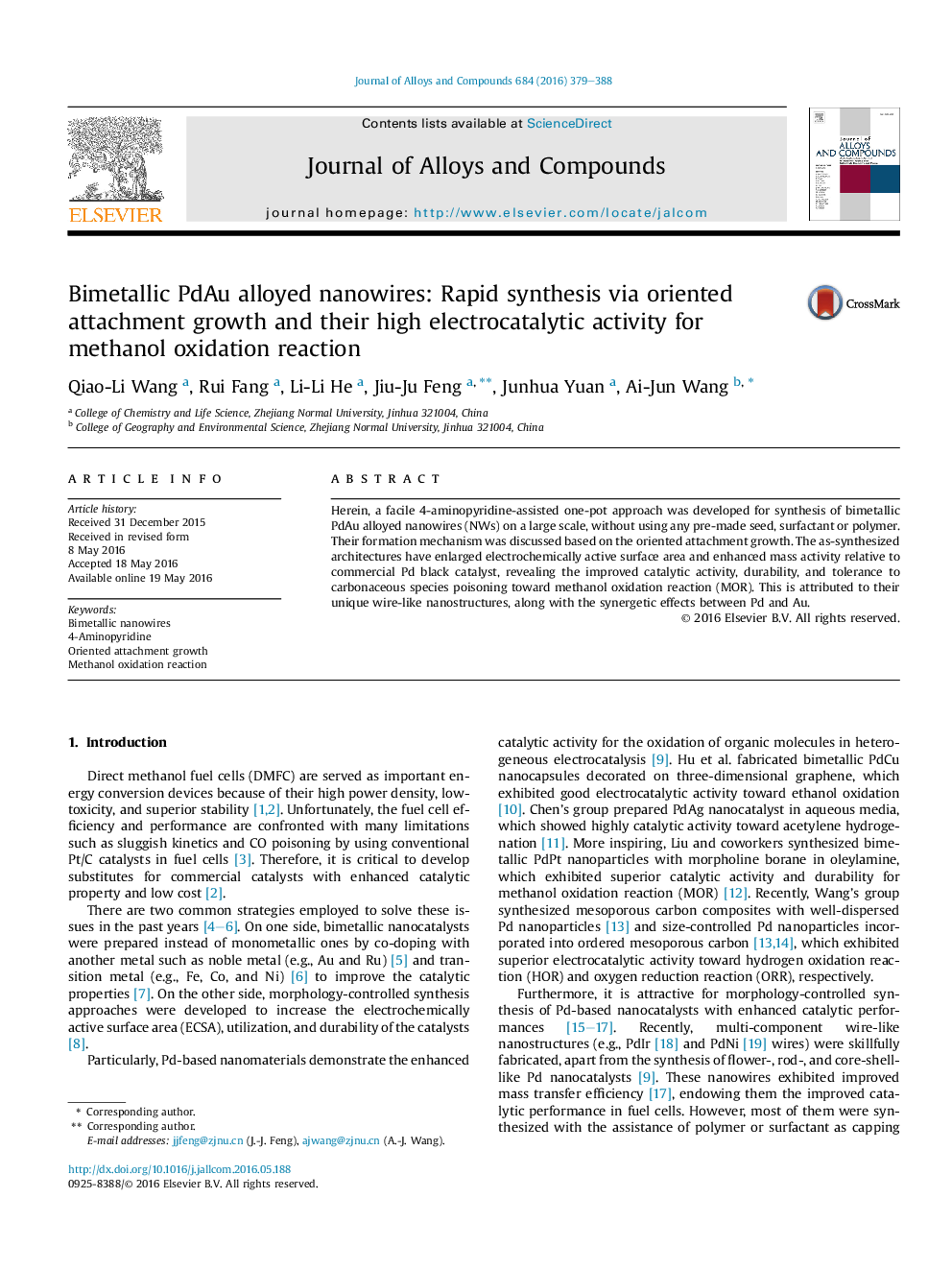| Article ID | Journal | Published Year | Pages | File Type |
|---|---|---|---|---|
| 1605261 | Journal of Alloys and Compounds | 2016 | 10 Pages |
•PdAu NWs were facilely prepared by a rapid wet-chemical approach via oriented attachment growth.•4-Aminopyridine was used as the growth director and weak stabilizing agent.•PdAu NWs had enlarged electrochemically active surface area.•The architectures exhibited enhanced catalytic performance for MOR.
Herein, a facile 4-aminopyridine-assisted one-pot approach was developed for synthesis of bimetallic PdAu alloyed nanowires (NWs) on a large scale, without using any pre-made seed, surfactant or polymer. Their formation mechanism was discussed based on the oriented attachment growth. The as-synthesized architectures have enlarged electrochemically active surface area and enhanced mass activity relative to commercial Pd black catalyst, revealing the improved catalytic activity, durability, and tolerance to carbonaceous species poisoning toward methanol oxidation reaction (MOR). This is attributed to their unique wire-like nanostructures, along with the synergetic effects between Pd and Au.
Graphical abstractA rapid 4-aminopyridine-assisted approach was developed for large-scaled synthesis of bimetallic PdAu nanowires via oriented attachment growth. The as-obtained architectures showed the enhanced catalytic performance toward MOR.Figure optionsDownload full-size imageDownload as PowerPoint slide
